Blind Spot Monitoring (BSM) system
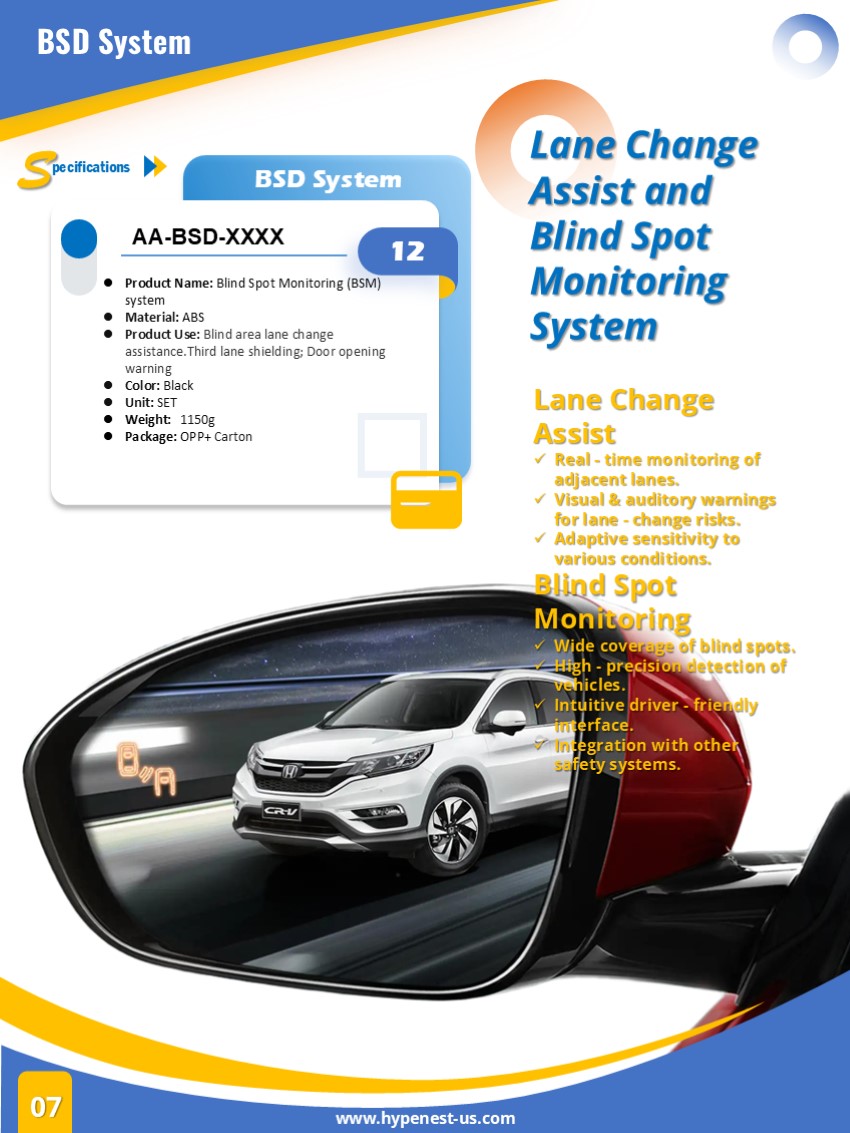
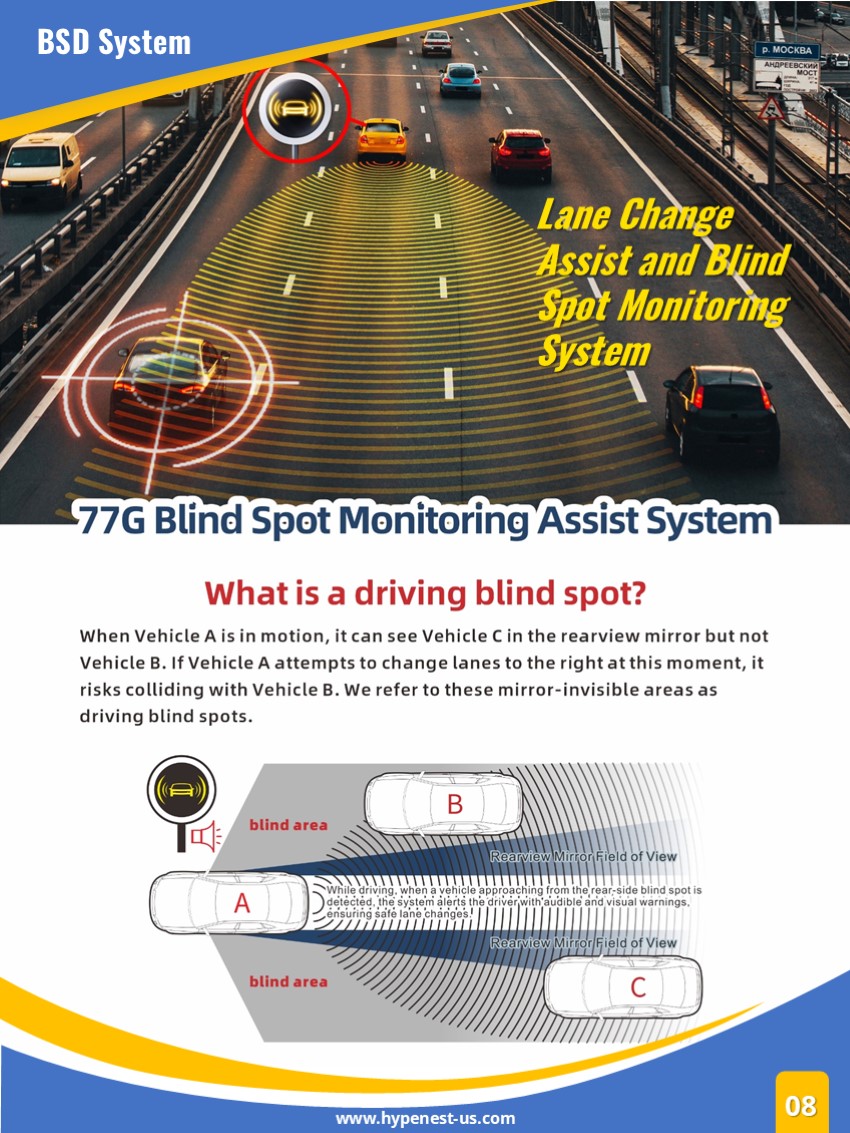
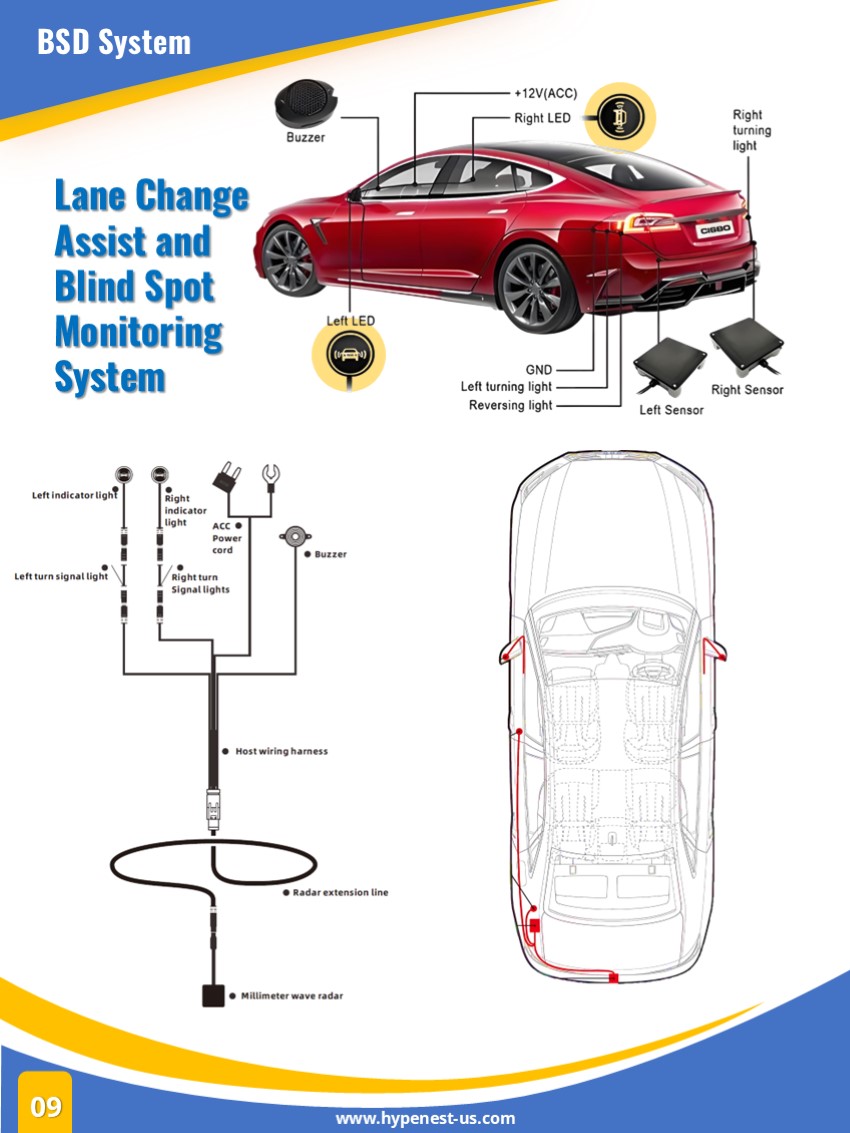
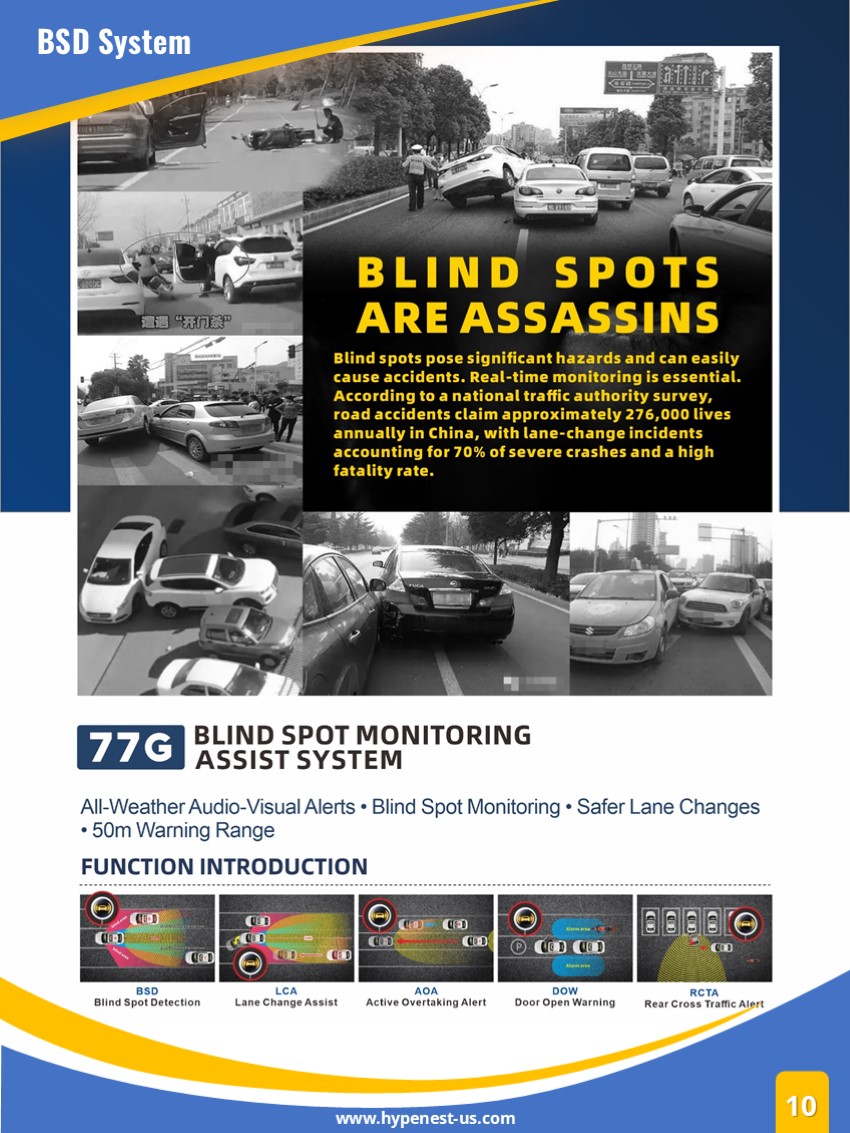

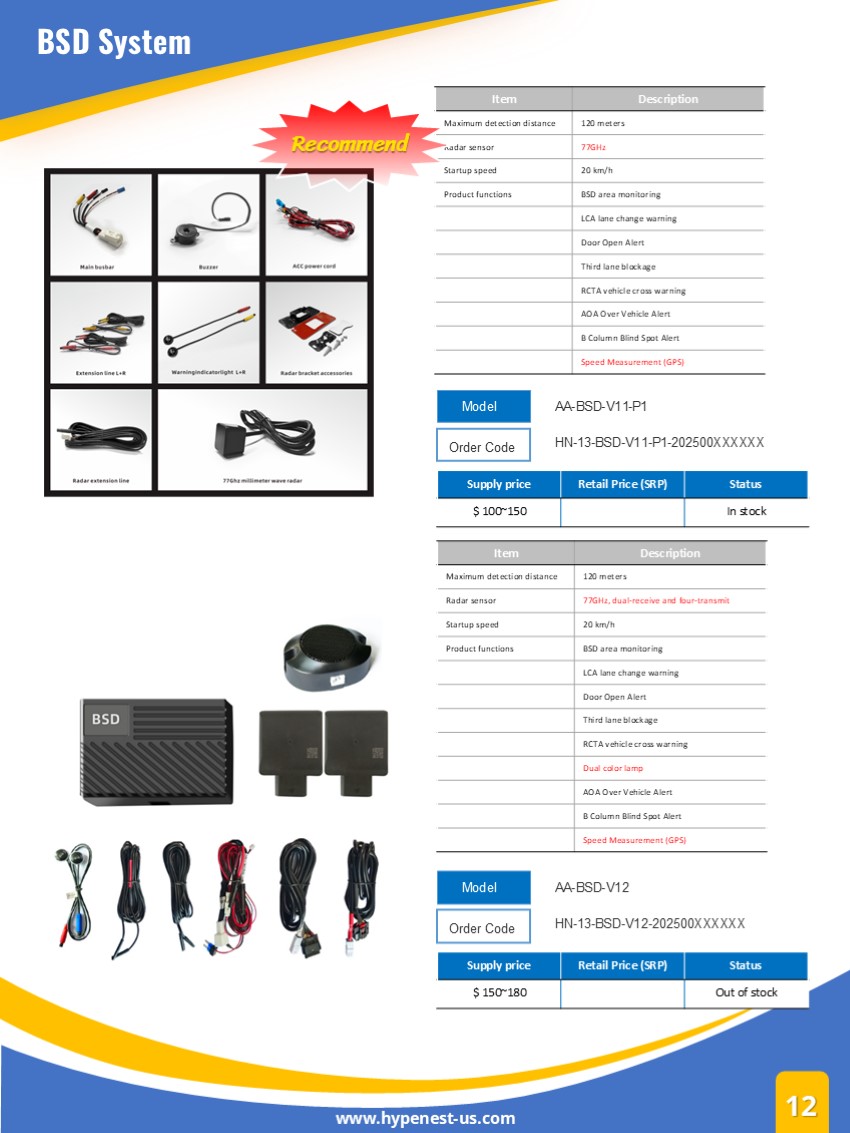
Blind Spot Monitoring (BSM) systems are advanced driver-assistance technologies designed to enhance vehicle safety by helping drivers detect vehicles in their blind spots. Here's an overview of how BSM systems work, their components, and benefits:
How BSM Works
- Detection: BSM systems typically use sensors (often radar or cameras) mounted on the sides of the vehicle to monitor adjacent lanes.
- Alerts:
- Visual Alerts: If a vehicle is detected in the blind spot, a warning light may illuminate on the corresponding side mirror or A-pillar.
- Audible Alerts: Some systems provide an auditory warning if the driver signals to change lanes while a vehicle is in the blind spot.
- Support During Maneuvers: More advanced BSM systems may provide steering intervention or additional warnings if the driver attempts to merge into a lane occupied by another vehicle.
Components of BSM
- Sensors: Usually located on the sides of the vehicle, these detect the presence of nearby vehicles in the blind spots.
- Control Module: Processes data from the sensors and determines when to activate alerts.
- Alerts: Lights on mirrors, dashboards, or sounds that notify the driver of potential hazards.
Benefits of BSM
- Increased Safety: Reduces the risk of collisions during lane changes and merges.
- Enhanced Awareness: Helps drivers stay informed about vehicles in their vicinity that they might not see.
- Comfort: Provides peace of mind for less experienced drivers or those who may be more anxious about changing lanes.
Considerations
- Limitations: BSM systems may not detect smaller vehicles, motorcycles, or cyclists, and drivers should not rely solely on the technology.
- Weather Conditions: Heavy rain, snow, or dirt on sensors can affect performance.
Conclusion
Blind Spot Monitoring is an essential safety feature that contributes to safer driving practices. As automotive technology continues to advance, BSM systems are becoming more sophisticated, integrating seamlessly with other driver-assistance systems to enhance overall vehicle safety.





